L9- Arctic Climate Change
Guest lecture→ Garth Phoenix
Current + Future Warming-
the Arctic is warming nearly 4x faster than the global average
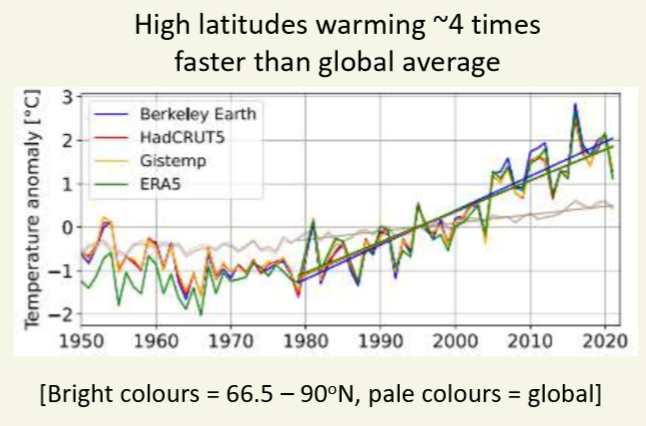
when modelling, there is always more warming at northern latitudes, than the rest of the world
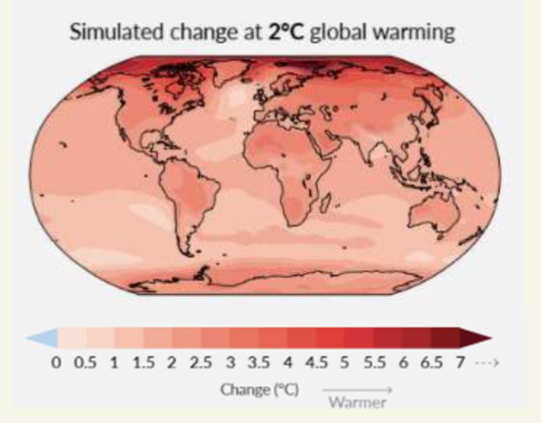
the Antarctic has no permanent population whilst lots of people live in the Arctic
Issues due to warming in the Arctic:
arrival of new vector-bourn diseases
loss of original food storage methods e.g. cold ground
declining of sea ice
thawing of permafrost
Arctic Sea Ice-
expands in the winter, shrinks (not fully) in the summer
is at its minimum in September- changes in this over time is a good indicator of how sea ice is changing:
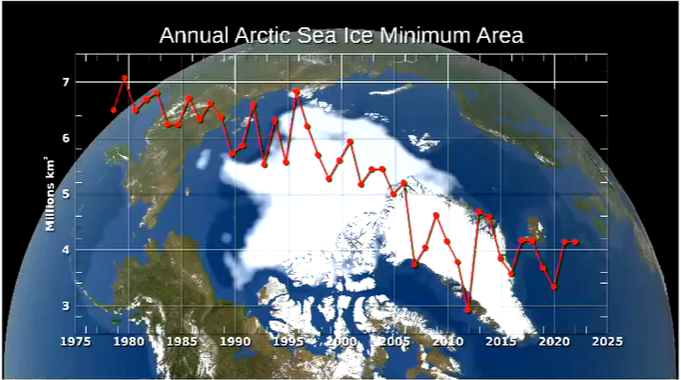
is declining at 12.5% per decade
17 lowest have occurred in the last 17 years, lowest on record is in 2012
Permafrost Thawing-
permafrost:
permanently frozen ground
underlays 24% of land in the Northern hemisphere
stores 1300t of carbon as peat and methane (2x the carbon in the atmosphere)
ice is a structural component of the ground→ permafrost thaws- ice thaws- lose structure- ground collapses
thermokarst→ general term for features created by permafrost thawing and sea ice loss:
immediate effect→ slumping of ground
retrogressive full slump→ thaws, headwall is exposed to warm air, thaws, next headwall is exposed, thaws…
active layer detachment slides- losing big chunk of land
ice-wedge polygons- heterogeneity in terrain
collapsed peatlands and thermokast lakes- ground collapses and fills with water
causes devastation on coastlines
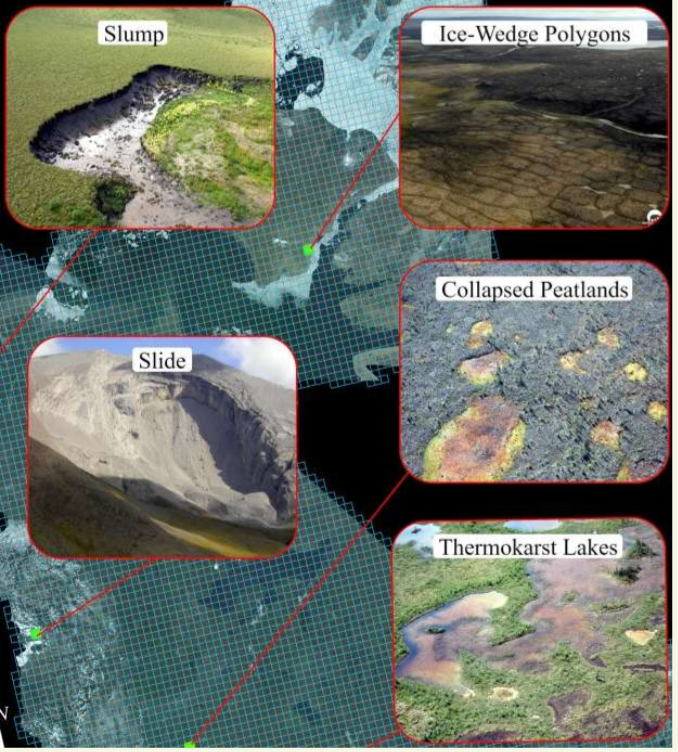
Indigenous People-
40 groups in the Arctic, have different cultures/ways of life
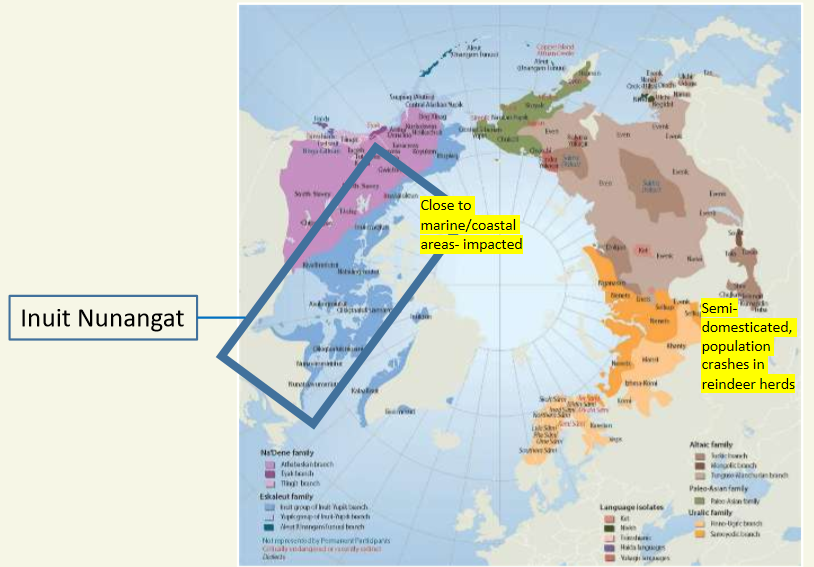
study focuses on Inuit Nunangat-
4 Northern Canadian regions, modern societies with traditional ways of life
all have tight coupling of land and sea
have close relationships with the environment for centuries but is becoming increasingly hard to apply knowledge to current environment changes
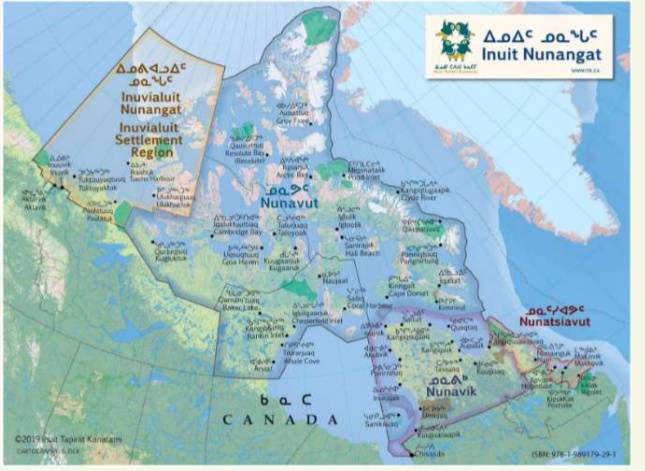
Sea Ice Loss:
sea ice is central to Inuit culture, food, livelihoods, is an extension of the land
positives and negatives of ice loss:
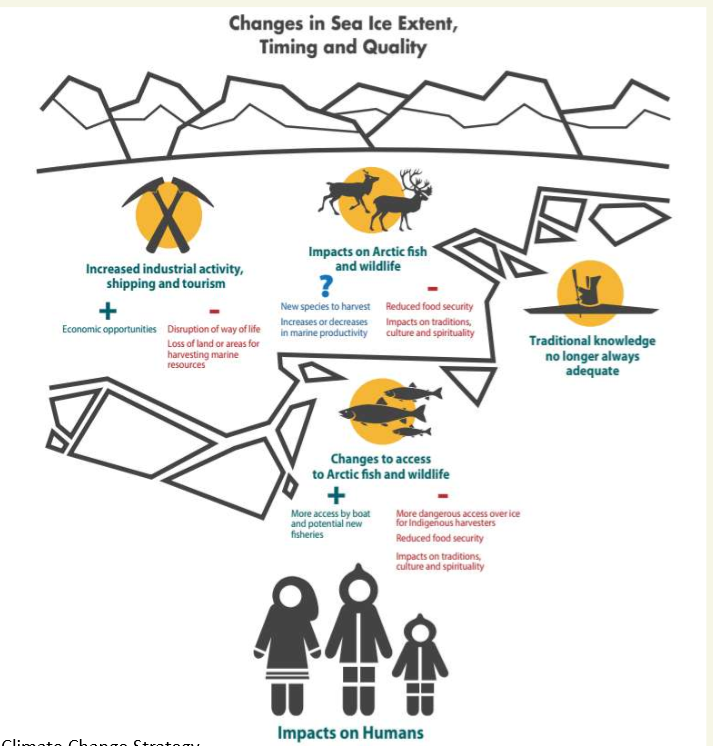
economic opportunities- opening of north sea passage- /Inuit need economic control to be a positive
new species migrating north- but will compete with species there
more fractured ice for longer time, more open ocean, unpredictable sea patterns, timing of events not matching anymore
→ increasing dangerous sea ice conditions→ traditional travel routes are becoming dangerous/inaccessible
road map (Western view)→ one road
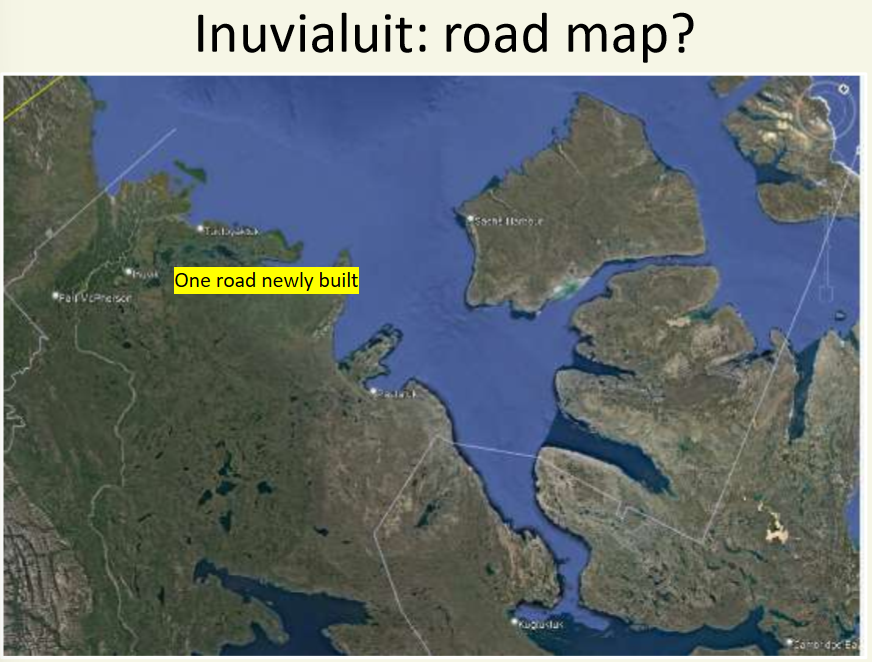
road map (Inuit view)→ travel using many methods, there are lots of routes on sea ice, access crucial areas, ocean and its resources (hunting/fishing)
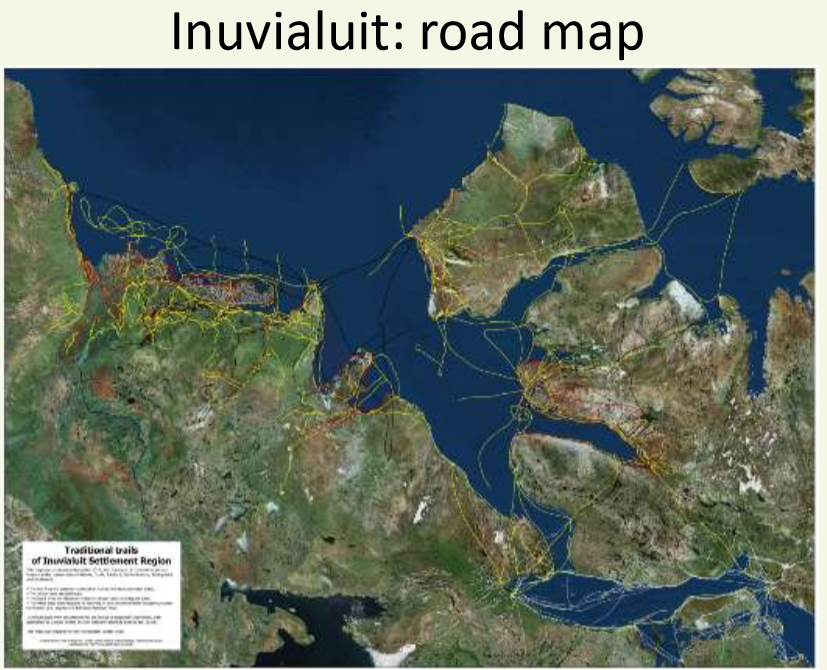
Permafrost Thaws-
erosion, communities sinking, houses collapsing, flooding of coastal communities
are now building houses on stilts to keep permafrost underneath frozen but is a lot of effort
are given guides on how to protect homes from collapsing
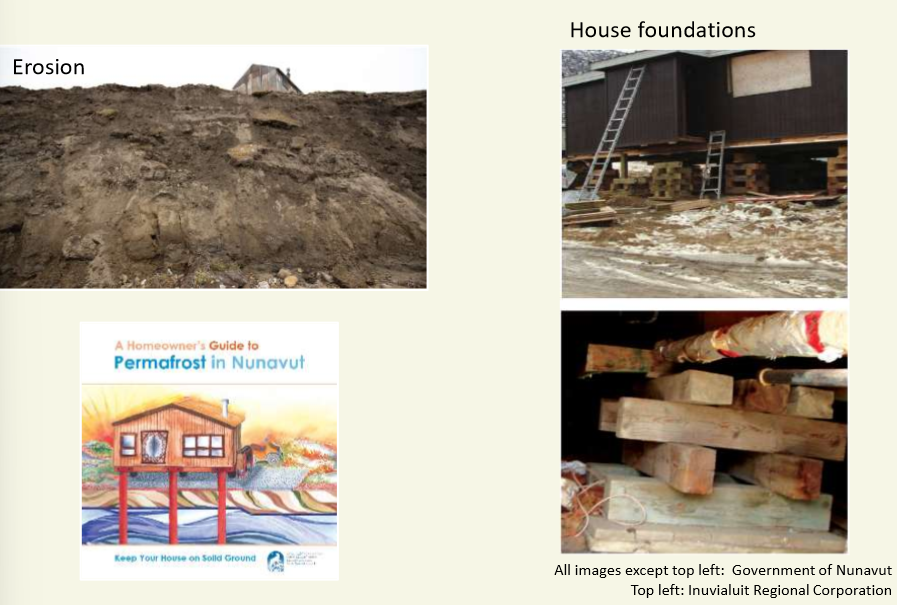
traditional fishing ground→ Husky Lake from the Inuvik-Tuktoyakut Highway (new road):
was fished for generations with no damage
now can see the damage done to the ground by the ski-doos:
starting to flood
ski-doos compact ground, water accumulates, transfers heat more readily, permafrost thaws more, ground subsides more, plants die, no transpiration of the ground, water accumulates
more trails are being driven as other ones become impassable→ more damage
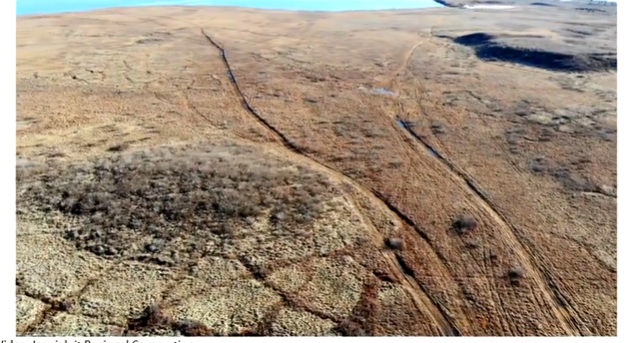
Social Injustice-
Inuit are at the forefront of climate change impacts→ amplifies the social injustices between Inuit and Western societies e.g.
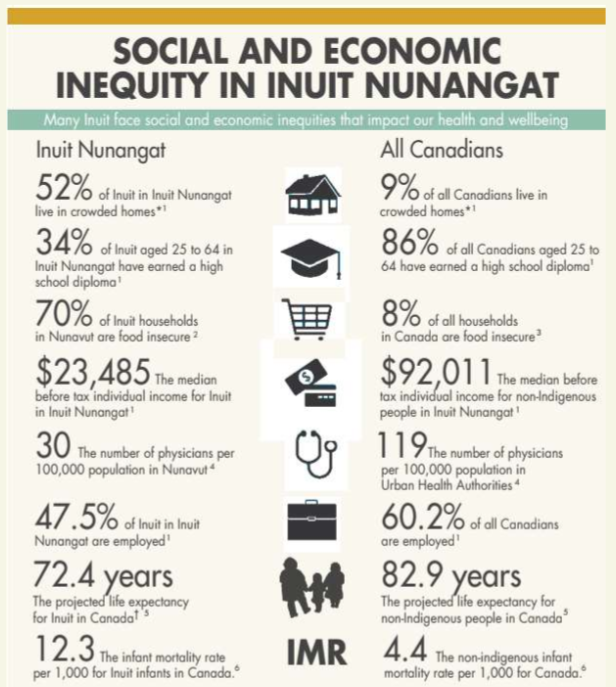
population of Inuit has increased by 48% but publications from this area have increased by 200%→ there is an increase in interest
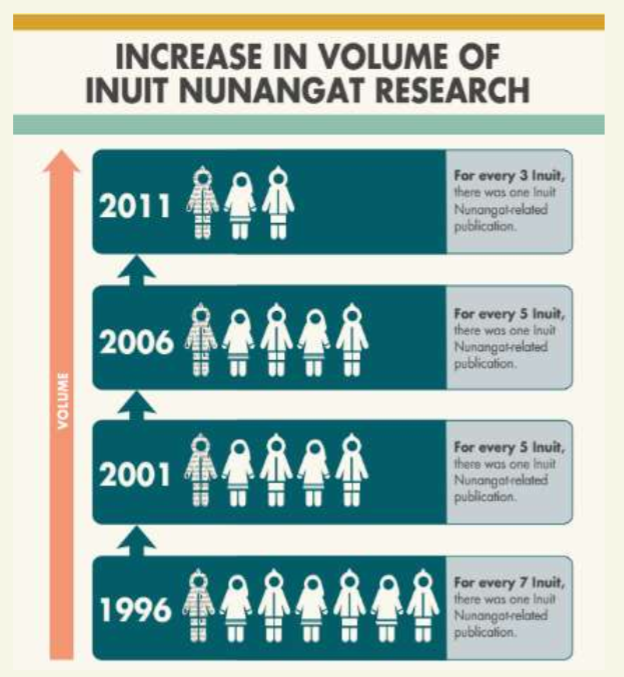
BUT most of the publications are by Western societies→ have made Inuit self-determination in research strategies:
research benefits Inuit
Inuit have input in research design at the very start
research builds up Inuit expertise
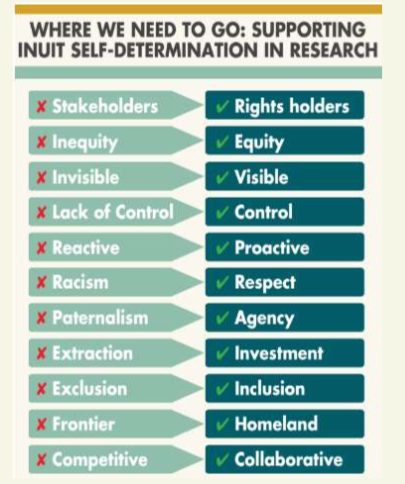
5 priority areas:
Inuit control and design from start
leaving the data behind too
working with Inuit scientists and those wanting to build skills
leaving a legacy where Inuit can conduct their own research
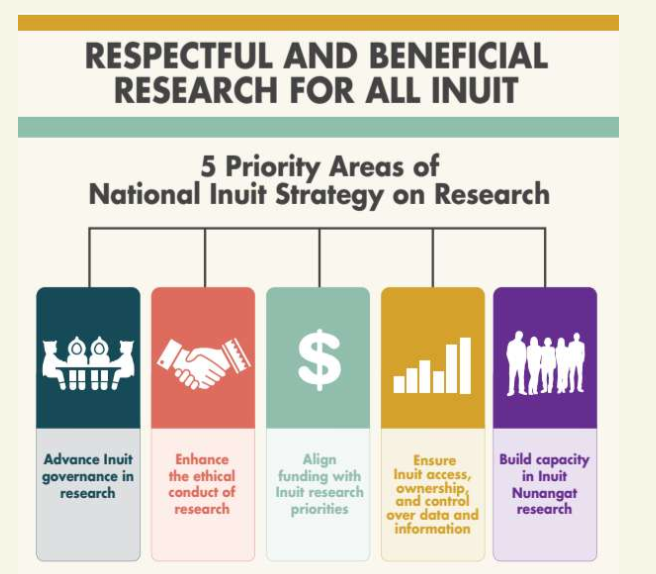
Summary:
Climate change is happening faster in the Arctic than the rest of the world, resulting in sea ice loss and thawing of permafrost.
Sea ice is critical infrastructure for Inuit, and is a central part of culture, community and livelihood. Its loss has major impacts for travel and access to ocean resources.
Permafrost thaw can also damage tails on land, again impacting access to resources and culturally important sites.
Houses and other infrastructure such as roads and jetties are also at risk from permafrost thaw, and additional erosion.
Social and economic inequality in Inuit Nunangat is considerable.
Research into solutions must be conducted in a way that ensures Inuit self determination in research.
look at national geographic indigenous people of Canada